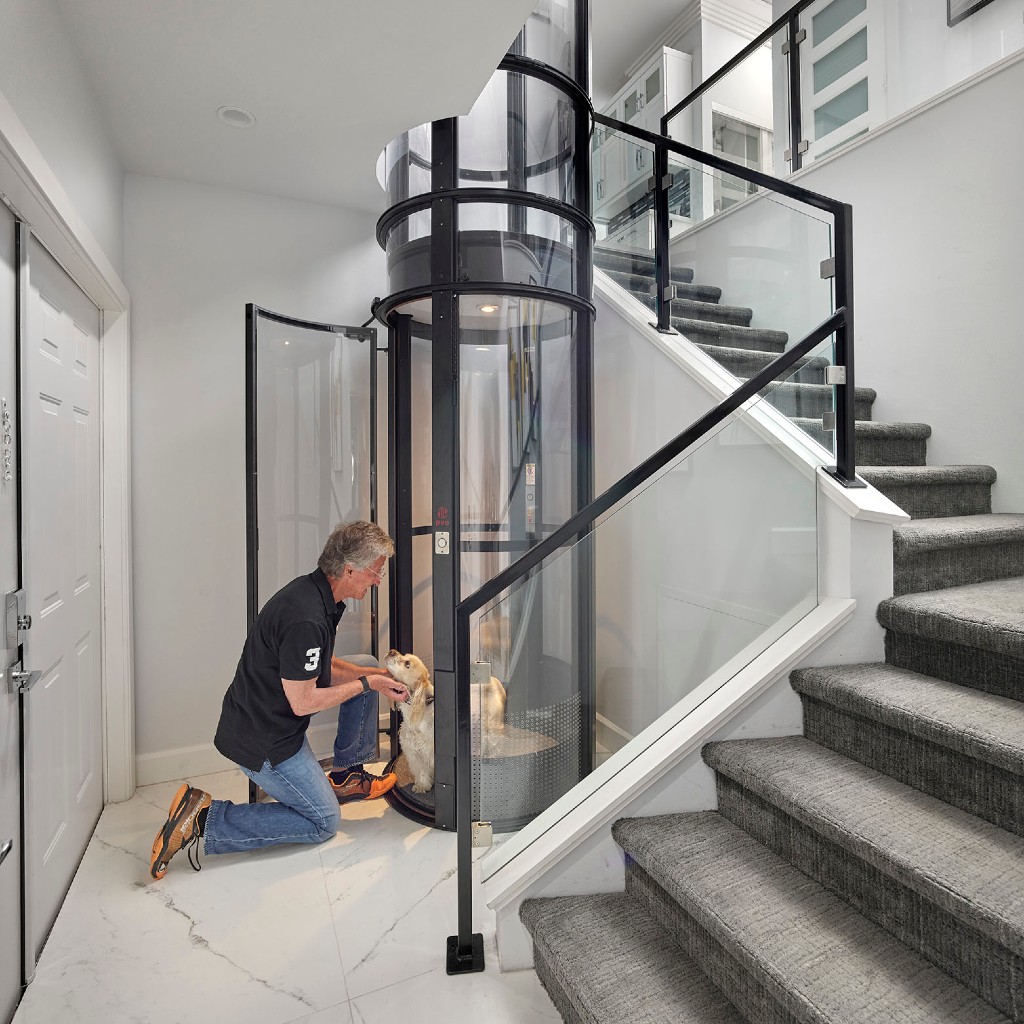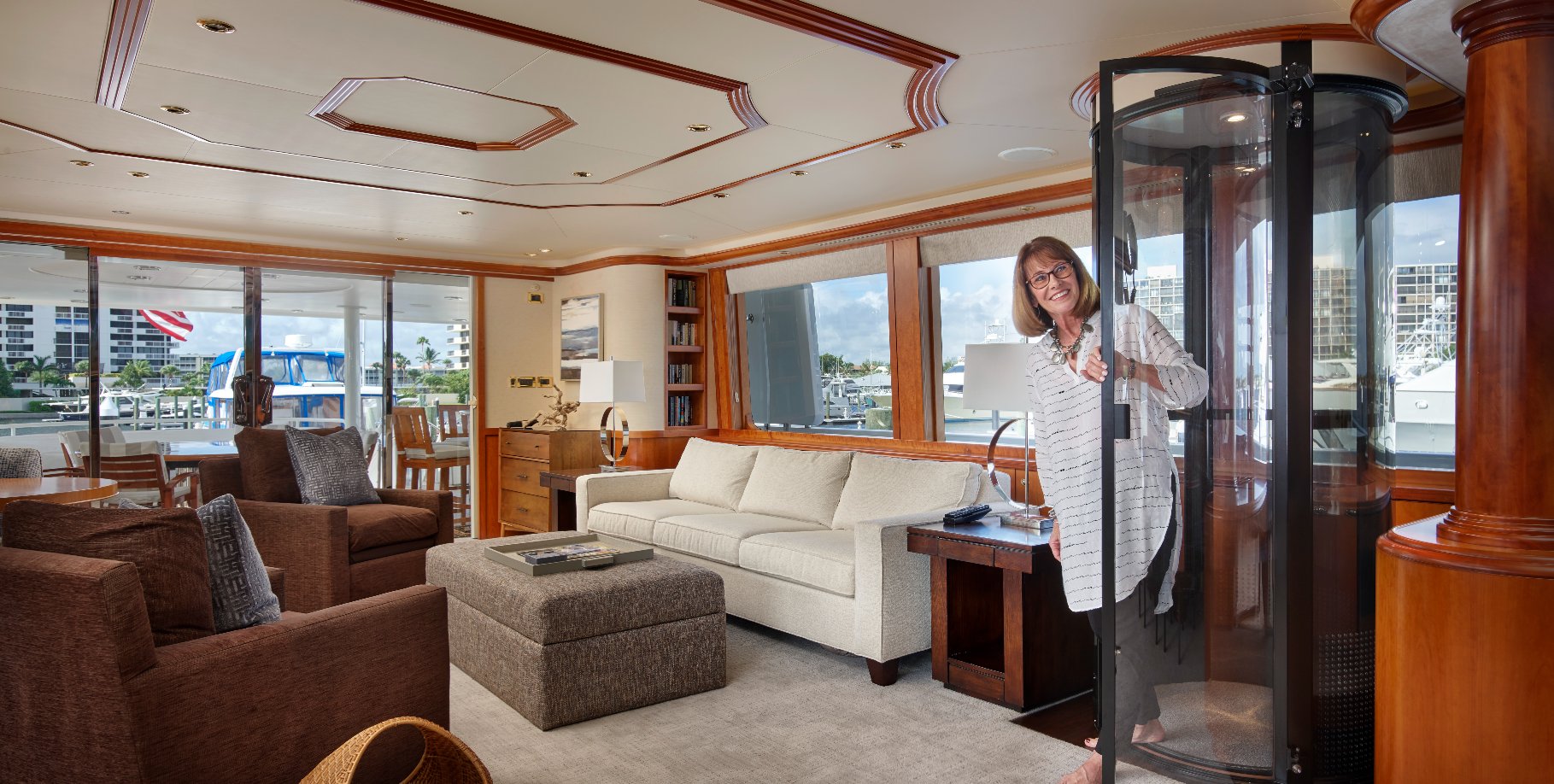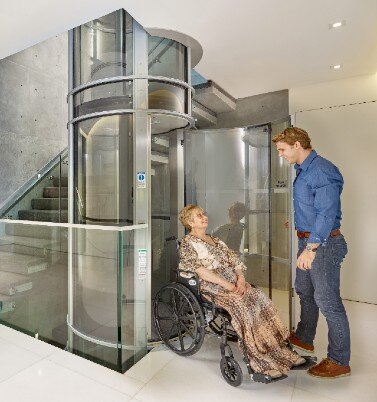
Living independently means having the freedom to access every part of your own home. But for individuals with limited mobility, navigating stairs or uneven surfaces can become a significant barrier. Handicap lifts offer a practical and empowering solution, restoring accessibility and fostering a sense of self-reliance.
This comprehensive guide delves into everything you need to know about handicap lifts for your home, empowering you to make informed decisions about this life-changing investment.
Understanding Handicap Lifts: Different Types and Their Purposes
Handicap lifts, also known as platform lifts or wheelchair lifts, come in various configurations, each suited to specific needs and environments. Here’s a breakdown of the most common types:
1. Vertical Platform Lifts (VPLs):
- Best for straight vertical travel between floors.
- Ideal for indoor or outdoor use.
- Requires minimal space beyond the platform footprint.
- Can be customized with folding platforms and enclosed shafts for aesthetics.
2. Inclined Platform Lifts (IPLs):
- Designed to travel along an inclined path, overcoming stairs.
- Suitable for both indoor and outdoor applications.
- Requires more space than VPLs due to the ramped track.
- Often seen in public buildings and residential settings with limited space for a vertical lift.
3. Stairlifts:
- Mounted directly on existing stairs, providing a seated ride up and down.
- Perfect for straight or curved staircases.
- Space-efficient option, typically with a folding rail when not in use.
- May not be suitable for all types of staircases or individuals with specific mobility needs.
4. Home Elevators:
- Enclosed cabins offering full-fledged vertical transportation between floors.
- Luxurious and spacious option for multi-story homes.
- Requires significant construction and space for the elevator shaft.
- Can be customized with various features and finishes.
Choosing the Right Lift: Key Considerations for Your Home
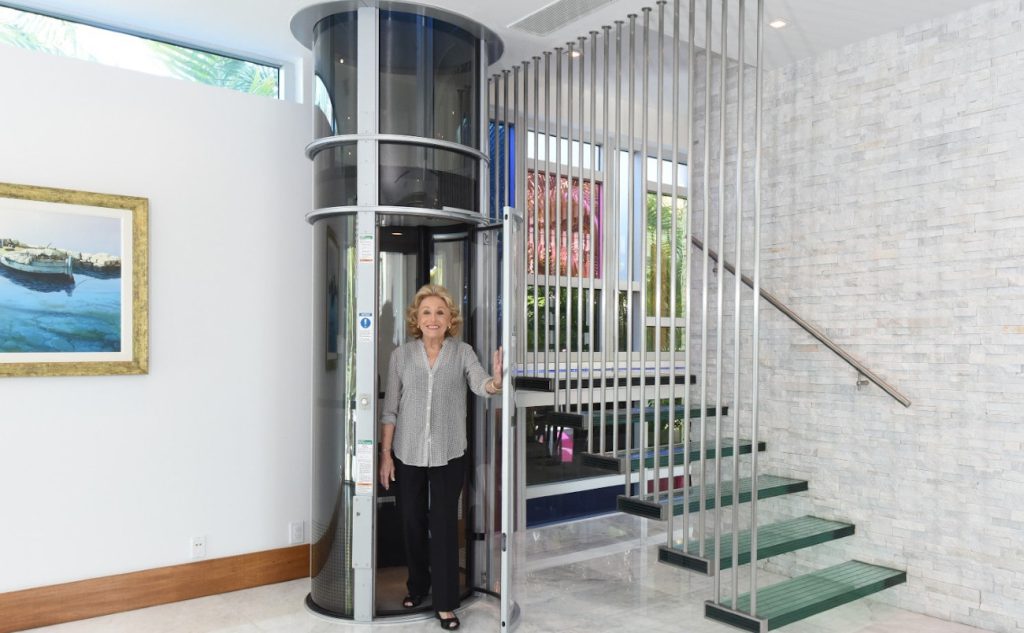
Finding the ideal handicap lift involves careful consideration of various factors:
1. Needs and Usage:
- Who will be using the lift?
- What level of mobility assistance is required?
- Frequency of use and desired weight capacity.
2. Home Layout and Space:
- Measure available space at potential installation points.
- Consider existing obstacles like doorways or low ceilings.
- Determine if indoor or outdoor installation is needed.
3. Budget and Maintenance:
- Research costs of different lift types and installation fees.
- Factor in ongoing maintenance and service contracts.
- Evaluate potential financial assistance programs.
4. Safety Features:
- Look for lifts with emergency stop buttons, overload protection, and automatic door locks.
- Consider additional safety features like power outages backup or platform lowering in case of emergencies.
5. Aesthetics and Customization:
- Choose a lift that complements your home’s style and décor.
- Explore options for platform size, colors, and materials.
Expert Tips for a Smooth Installation and Enjoyable Experience
1. Consult a professional:
- Seek advice from experienced mobility specialists or occupational therapists.
- They can assess your needs, recommend suitable lifts, and handle the installation process.
2. Consider future needs:
- Choose a lift with enough weight capacity and platform size to accommodate potential changes in mobility.
3. User training and practice:
- Ensure all users receive proper training on the lift’s operation and safety features.
- Practice using the lift regularly to build confidence and familiarity.
4. Regular maintenance:
- Schedule regular maintenance checks as per the manufacturer’s recommendations.
- Address any concerns promptly to ensure continued safe and reliable operation.
Beyond Accessibility: The Empowering Impact of Handicap Lifts
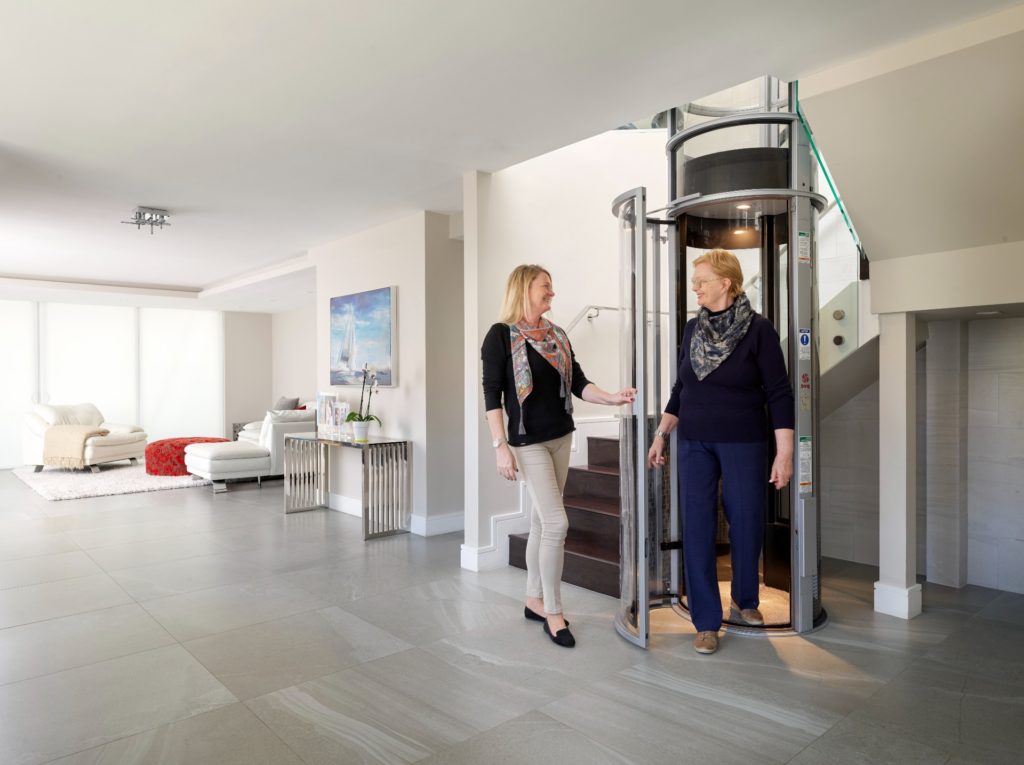
Installing a handicap lift is not just about overcoming physical barriers; it’s about regaining independence and fostering a sense of control within your own home. It allows individuals with limited mobility to participate fully in daily activities, engage with loved ones, and enjoy all aspects of their living space.
By carefully considering your needs, evaluating your home’s layout, and consulting with experts, you can choose the perfect handicap lift to transform your home into a truly accessible and empowering environment. Remember, independence is priceless, and investing in a handicap lift can unlock a world of possibilities within your own four walls.
Funding and Financial Assistance for Handicap Lifts
Purchasing and installing a handicap lift can be an investment, but fortunately, various financial assistance programs can help ease the burden. This section can explore:
- Government grants and programs: Many states and federal agencies offer financial assistance for home modifications, including handicap lifts. Research relevant programs based on your location and eligibility.
- Veteran benefits: Veterans with service-related disabilities may qualify for grants or funding through the Veterans Administration (VA).
- Private insurance: Some private insurance plans may cover a portion of the cost of a handicap lift if deemed medically necessary.
- Non-profit organizations: Several non-profit organizations offer financial assistance for mobility equipment, including handicap lifts. Explore options like United Spinal Cord Association or Paralyzed Veterans of America.
Safety Precautions and Regulations
Safety is paramount when using handicap lifts. This section can highlight essential safety measures:
- Regular inspections and maintenance: Emphasize the importance of adhering to the manufacturer’s recommended maintenance schedule and conducting regular safety checks.
- Emergency preparedness: Explain how to operate the lift in case of power outages or other emergencies. Include important contact information for service providers.
- User training and limitations: Ensure all users receive proper training on safe operation and understand the lift’s weight capacity and limitations.
- Building codes and permits: Research and comply with local building codes and permit requirements for handicap lift installation.
Customization and Additional Features for Enhancements
While the primary focus is accessibility, customization options can elevate the user experience:
- Platform size and materials: Discuss options for platform size to accommodate specific needs and comfort, exploring materials like vinyl, mesh, or wood.
- Seating and comfort features: Consider options for comfortable seating, armrests, footrests, and swivel mechanisms for ease of transfer.
- Enclosed cabins and weatherproofing: Explore enclosed cabins for home elevators or weatherproofing features for outdoor lifts.
- Smart home integration: Discuss the potential for integrating the lift with smart home systems for voice control or remote operation.
Frequently Asked Questions (FAQs) about Handicap Lifts for Home:
1. What is the typical lifespan of a handicap lift?
The lifespan of a handicap lift can vary depending on several factors like usage frequency, maintenance practices, and environmental conditions. However, a well-maintained lift can last between 15 and 25 years. Regular inspections and servicing are crucial for ensuring longevity and safety.
2. How much does it cost to install a handicap lift?
The cost of installing a handicap lift can vary significantly depending on the type of lift, its features, size, complexity of installation, and your location. Here’s a general breakdown:
- Vertical Platform Lifts (VPLs): $3,000 – $15,000
- Inclined Platform Lifts (IPLs): $5,000 – $20,000
- Stairlifts: $2,500 – $10,000
- Home Elevators: $10,000 – $50,000+
3. Are handicap lifts noisy?
Modern handicap lifts are designed to be relatively quiet, operating with minimal noise levels comparable to an air conditioner or dishwasher. However, the specific noise level can vary depending on the model and its size.
4. Can I install a handicap lift myself?
While some DIY kits are available, professional installation is highly recommended for handicap lifts. Improper installation can compromise safety and functionality, posing serious risks. Seek certified professionals with experience in handling your specific lift type.
5. What happens if the lift breaks down?
Most reputable lift manufacturers offer warranty coverage and repair services. Additionally, consider investing in a maintenance contract for regular inspections and prompt service in case of breakdowns.
6. How does a handicap lift affect the resale value of my home?
Installing a handicap lift can actually increase the resale value of your home by making it more accessible to a wider range of potential buyers, especially those with mobility limitations. Additionally, it demonstrates your commitment to creating a universally accessible and inclusive living space.
7. What funding options are available for handicap lifts?
Various programs and resources can help offset the cost of handicap lifts, including:
- Government grants and programs: Check with your state and federal agencies for eligibility.
- Veteran benefits: Veterans with service-related disabilities may qualify for VA funding.
- Private insurance: Some plans offer partial coverage for medically necessary lifts.
- Non-profit organizations: Several organizations offer financial assistance for mobility equipment.
8. Do I need a permit to install a handicap lift?
Permits are often required for handicap lift installations. Contact your local building department to understand the specific requirements and application process.
9. Are there any tax benefits for installing a handicap lift?
Some countries and states offer tax deductions or credits for home modifications, including handicap lifts. Research relevant programs in your location.
10. How do I choose the right handicap lift for my needs?
Consulting a qualified mobility specialist or occupational therapist is crucial. They can assess your specific needs, recommend suitable lift types based on your home layout and budget, and guide you through the selection process.
Reclaiming Independence with PVE30: The Space-Saving Champion for Your Home
Imagine effortlessly navigating your multi-story home, regaining freedom and independence without sacrificing precious space. The PVE30, the world’s smallest residential elevator, makes exactly that possible.
Why choose PVE30?
- Unmatched Compactness: At just 30 inches in diameter, it’s the smallest available home lift, fitting seamlessly into tight spaces where traditional elevators simply can’t go. No need for major structural changes or sacrificing entire rooms.
- Affordability that Empowers: Enjoy incredible value for your investment. PVE30’s innovative design and space-saving efficiency translate to a more accessible price tag compared to larger home elevators.
- Effortless Accessibility: Travel comfortably between floors with a 350lb (159kg) weight capacity and a smooth, quiet ride. Perfect for individuals with limited mobility or those seeking added convenience.
- Stylish and Customizable: Choose from a variety of finishes and options to complement your home’s décor, making it both functional and aesthetically pleasing.
Don’t let limited space limit your independence.
Ready to explore how PVE30 can transform your home?
Visit PVE Official Website to learn more and request a free consultation. Experience the freedom and accessibility you deserve in the comfort of your own home, without compromise.
PVE30: Reclaim your independence, one small step at a time.

